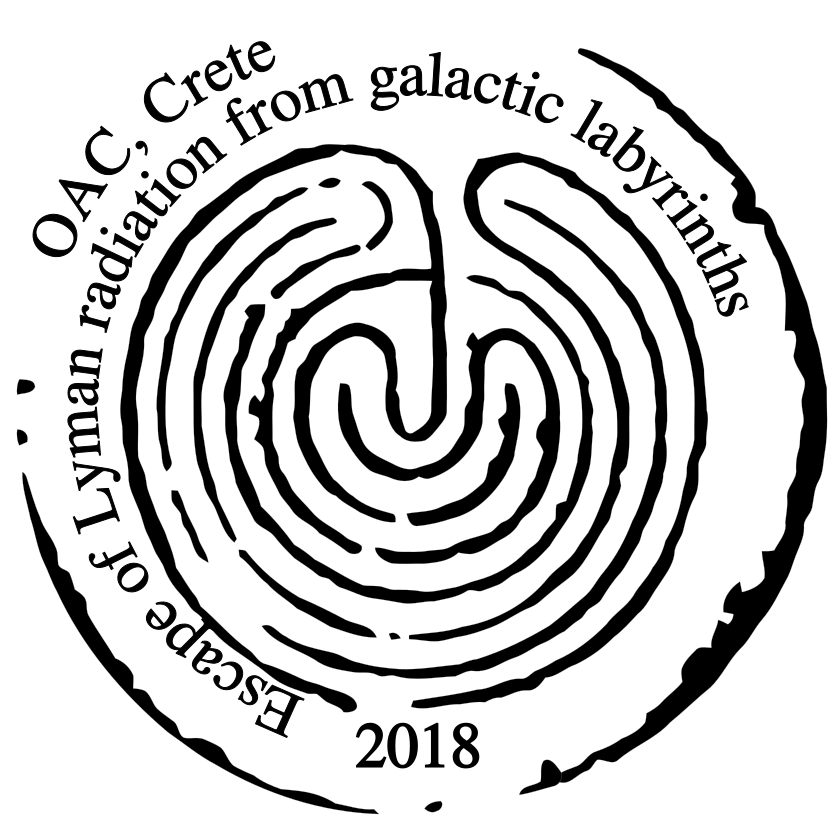
Rationale
The genesis and escape of Lyman alpha and continuum radiation on galactic and sub-galactic scales is a result of a complex and subtle interplay between the dynamical constituents of evolving galaxies. Whereas the Lyman radiation produced by massive stars, AGN and shocks has been studied in detail, our knowledge on how Lyman photons, once they are produced, are reprocessed within a galaxy is woefully incomplete, especially when it comes to the mechanisms facilitating and regulating their escape into the galactic halo and beyond.
On sub-galactic scales, the pathways of Lyman photons from young stellar clusters and HII regions into the ambient diffuse ionized gas, and their imprints on the physical properties of the multi-phase ISM are still obscure. On galactic scales, the scattering Odyssey of Lyman-alpha photons from their birthplace out to the galactic halo remains to be written. How feedback processes shape the 3D structure, chemical abundance patterns and kinematics of the gas along that route and what mechanisms regulate the escape of Lyman photons out of the galaxy labyrinth is an unsolved enigma. Similarly, how Lyman photon escape, and its evolution with time are related to the growth of galaxies and to various star-formation rate indicators remains a longstanding puzzle.
The escape fraction of Lyman radiation along the co-evolution of AGN with their galaxy hosts and in different environments - from evolving HII regions all the way to galaxy mergers and massive early-type galaxies - are further examples of subjects with key astrophysical relevance where our knowledge is largely incomplete.
A final question concerns how escaping Lyman radiation illuminates the cosmic web and may influence galaxy evolution over larger cosmic volumes?
The meeting aims at bringing observers and theoreticians together towards a joint exploration of the Odyssey that Lyman radiation undergoes as it attempts to escape the galaxy labyrinth. This meeting is motivated by astrophysically important questions, such as:
Confirmed Key Speakers (as of September 3rd, 2018)
Dawn Erb (University of Wisconsin Milwaukee, USA)
Wolf-Rainer Hamann (University of Potsdam, Germany)
Timothy Heckman (Johns Hopkins University, USA)
Matthew Hayes (Stockholm University, Sweden)
Matthew Lehnert (Institut d'Astrophysique de Paris, France)
Céline Peroux (Laboratoire Astronomique de Marseille, France)
Monica Relaño (University of Granada, Spain)
Joki Rosdahl (Centre de Recherche Astrophysique de Lyon, France)
Daniel Schaerer (University of Geneva, Switzerland)
Elizabeth Stanway (University of Warwick, UK)
Anne Verhamme (Observatoire de Genève, Switzerland)
Peter Weilbacher (Leibniz Institute for Astrophysics, Germany)
Lutz Wisotzki (Leibniz Institute for Astrophysics, Germany)
We use cookies to ensure that you get the best experience on our website, by continuing on this website you agree to the storing of cookies on your device. Learn more about our Privacy Policy.